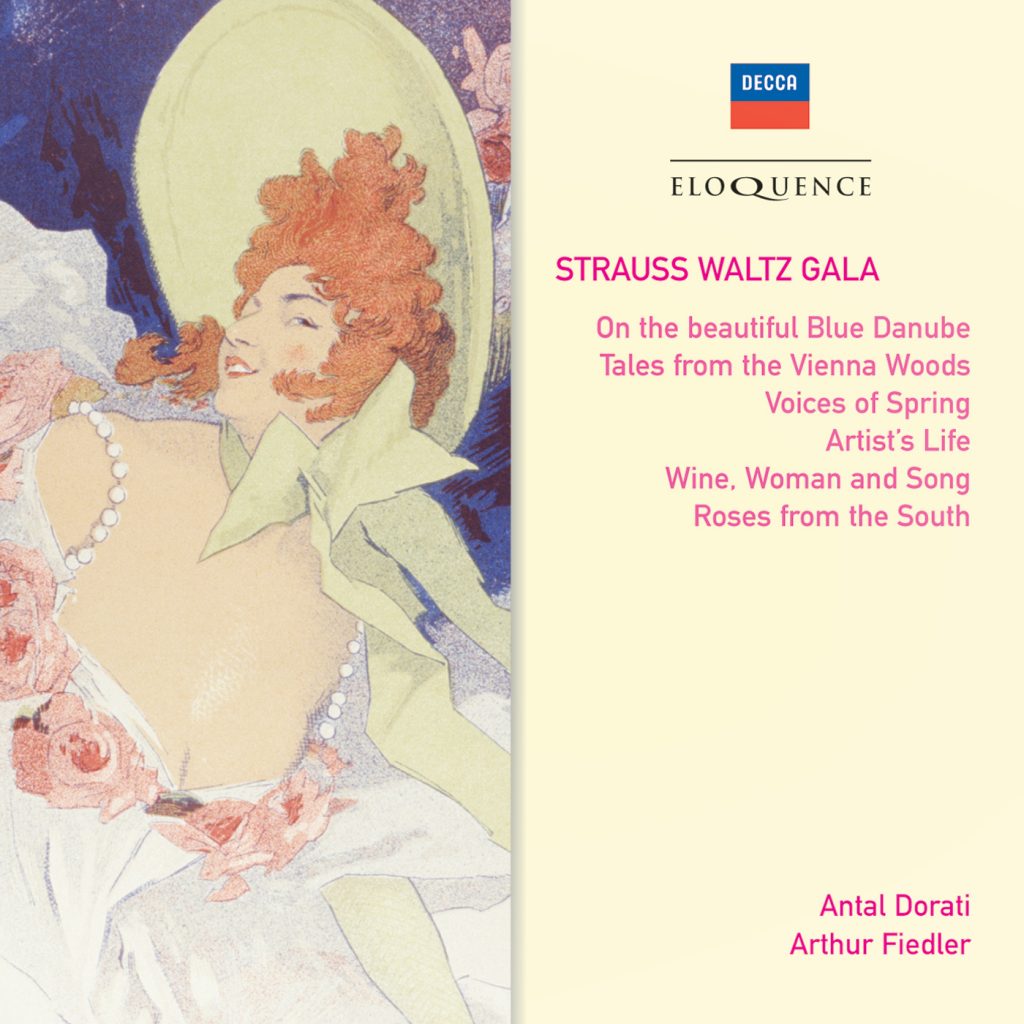
On the face of it, the Strauss family would seem to symbolise everything that is late-nineteenth-century Austrian. It was not always so: the grandfather of Johann Strauss I was not only Hungarian but Jewish and had been part of the wave of immigrants from Hungary attracted by Vienna’s enduring prosperity. Johann I himself, made every effort to hide his Jewish origins; he thus made no attempt to contradict one particular bit of scurrilous gossip about his lineage, namely that his real father was in fact the Count Musin-Pushkin, Pushkin’s grandfather, who had spent some time in Vienna. In 1939, after the annexation of Austria by Nazi Germany, the German Reichs-Kulturkammer had the parish register of St. Stephen’s in Vienna falsified to back up the Strauss family’s Aryan credentials; they were happy to brand as ‘degenerate’ composers of Jewish origin such as Arnold Schoenberg, but the thought of having to ban the music of the Strauss family itself was clearly inconceivable.
Regardless of all this, the music of the Strauss family (Johann Strauss II in particular) came to epitomise the glory of Vienna in the late 19th century; the music of the ‘Biergarten’ took on a new sophistication. In its day, it was not only entertaining (as, of course, it still is), but highly topical. Johann Strauss II’s titles include references to new technological advances (‘Telegrammen’, ‘Telegraphische Depeschen’, ‘Electrophor-Polka’, ‘Durchs Telefon’…), as well as political developments (the obligatory coronations) and basics of quotidian life (‘Morning Papers!’). There are even titles which would seem to us rather abstrusely mathematical (‘Vibrationen’, ‘Cycloiden’,’ Spiralen’) – after all, he did have to provide titles for nearly 500 published works. In the highly charged political climate of 1848, this was to get him into a certain amount of hot water – some of his titles were seen by the omnipresent censor as revolutionary, and he was obliged to take a little more care in naming his entirely innocent waltzes and polkas.
Johann Strauss II composed his first 36 bars of waltz music at the age of six; he had, after all, grown up surrounded by it, in what was already the home of a renowned waltz composer by the name of Johann Strauss – soon to be obliged to call himself Johann Strauss I. (The house, incidentally, had the address of Rofranogasse 76 – Rofrano was to be the family name of the eponymous Rosenkavalier in the opera by Richard Strauss (unrelated – except musically – to the waltz family) which makes great use of waltzes despite being set many decades before the fashion for them.)
Both Strausses directed their own well-drilled ensembles from the position of first violin, playing along when actual time-beating was not required (which given the quality of the ensemble, schooled in the conventions of the music, was no doubt most of the time). Johann I and his orchestra travelled widely, performing at such illustrious occasions as Queen Victoria’s coronation celebrations, where the London ‘Morning Post’ declared: ‘So perfect a band was never before heard on this side of the Channel!… We must notice the superior element of Strauss himself on the violin; he performs with peculiar energy, and imparts much of his own spirit to the band, the combined effect of which more resembles the unity of one single, powerful instrument than any orchestra that has yet been heard in this country.’
The quality of the Strauss orchestras doubtless encouraged the development of those subtle rhythmic distortions without which a waltz is no waltz at all. Besides traditional distortions of tempo, there is also the characteristic anticipation of the second beat of the bar, a tradition which may well date back to days of the Strausses themselves.
The works presented here are all by Johann II, by common consent pre-eminent among the many waltz composers of his family. There is no particular need to introduce such pieces as these; there can surely be hardly a classical music lover on the planet who does not know the ‘Blue Danube’ waltz and even those few who are unfamiliar with such melodies as ‘Voices of Spring’ and ‘Wine, Women and Song’ have little to gain by reading about them.
Carl Rosman
JOHANN STRAUSS II
On the beautiful Blue Danube
Tales from the Vienna Woods
Voices of Spring
Artist’s Life
Wine, Woman and Song
London Philharmonic Orchestra
Antal Dorati
Roses from the South
Boston Pops Orchestra
Arthur Fiedler
Recording producer: Tony D’Amato (Dorati); Raymond Few (Fiedler)
Recording engineers: Arthur Lilley (Dorati); Michael Mailes (Fiedler)
Recording locations: Kingsway Hall, London, England, December 1966 (Dorati); Boston, USA, 1975 (Fiedler)
‘A disc that can be confidently recommended’ MusicWeb
